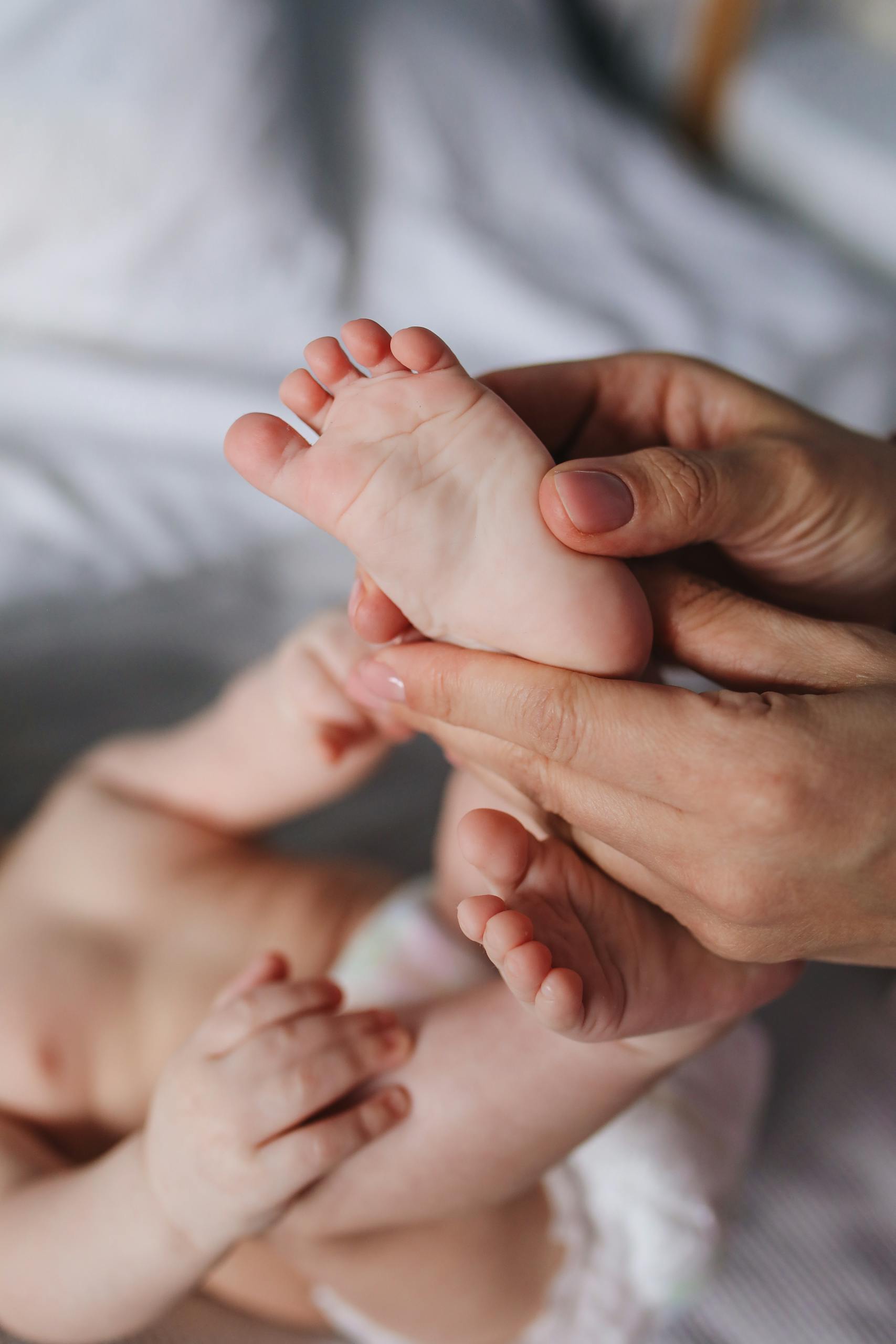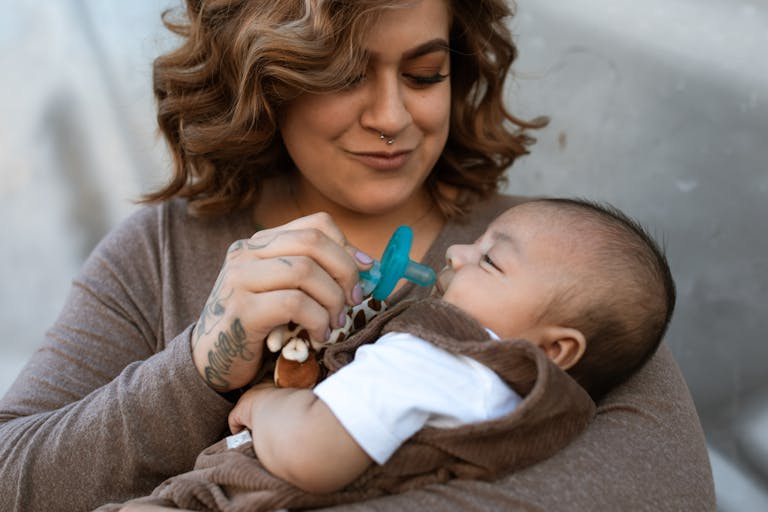Understanding how your baby responds to gentle touches on their feet may seem like a small detail, yet it can reveal a great deal about neurological health. For parents anxiously watching their child’s growth, the question looms—what’s normal, and when should you worry? The Babinski reflex—a test so simple, yet so illuminating—often creates confusion and concern, especially with so much talk around brain development and milestones. You’re about to discover how this fascinating reflex signposts your child’s neurological journey, when to be reassured, and how to spot the red flags that matter most. Through concrete scientific explanation, mingled with real-world advice, you’ll soon grasp the essentials: its definition, significance for your child, and expert tips for what to watch at every age.
Babinski Reflex: Definition and Medical Foundation
What, precisely, is the Babinski reflex? Imagine your newborn’s tiny foot, untouched and soft. Run a blunt stick gently along the sole, heel to toe, and suddenly—the big toe stretches upward, and the others fan apart like little sun rays. This reaction isn’t random. It’s a classic neurological response deeply linked to the maturation of the corticospinal tract—the vital pathway ferrying brain signals all the way to leg and foot muscles.
First described by Joseph Babinski, a neurologist ahead of his time, this reflex became the window through which doctors could glimpse the developing brain and spine without imaging machines or invasive tests. The very presence of the Babinski sign in infants signals a brain still in bloom, bustling with change—a landscape quite unlike the calming uniformity seen in adults.
The Babinski Reflex: Developmental Insights
Why Does the Babinski Reflex Matter for Babies and Older Children?
In newborns and children up to about 2 years old, the Babinski reflex is not only expected but welcomed. It reveals that those upper motor neurons—the brain’s long-distance communicators—are in training. As the nervous system strengthens and myelin sheaths wrap round these nerve fibers, a remarkable transformation unfolds: the toe’s upward stretch fades, replaced by a gentle curling downward (plantar flexion).
But what if, long after a child’s second birthday, that classic Babinski response still lingers? Or if it suddenly returns during childhood or adulthood? Here’s where questions deepen, and the test becomes more than a curiosity. Persistent or new-onset Babinski reflex hints at possible disruptions in the central nervous system—such as injuries, inflammatory disease, or developmental conditions like cerebral palsy.
The Anatomy Behind the Reflex
Picture a message igniting at the skin of the sole, zipping through sensory nerves, shooting up the spinal cord, traversing the brainstem, and receiving its final command from the cortex—before racing back down the spine to the toe. In the youngest children, inhibitory brakes are still loose, so the toes leap up. As these neural pathways complete their construction, the brakes engage; the response becomes subdued, precise.
How Is the Babinski Reflex Tested?
Simple Steps for Observing the Babinski Reflex
Wondering how a pediatrician so swiftly identifies this response? The process is gentle, brief, and entirely safe:
- The child lies relaxed, foot exposed.
- With a smooth, blunt instrument (often the rounded end of a reflex hammer or a tongue depressor), the clinician strokes firmly but softly along the outer border of the foot—starting at the heel, tracing up the side, and across the ball toward the big toe.
- A positive Babinski sign? That’s the big toe lifting up, the others spreading out, particularly in children under two.
- In older children and adults, in contrast, the toes should curl downward—a shift symbolising neurological maturity.
Tools and Variations Used in Practice
Medical professionals rely on variations—such as the Chaddock, Oppenheim, and Gordon reflexes—if testing the sole isn’t yielding clear findings. Stroking around the ankle, down the shin, or gently pressing the calf can all evoke reflections of the same essential brain-spinal communication. These backup methods help ensure testing doesn’t miss a subtle abnormality.
Recognising Norms Versus Concerns
It’s absolutely normal for:
- Infants and toddlers: Big toe up, fanning toes (Babinski reflex positive).
- Older children and adults: Toes down, no fanning (Babinski reflex gone).
What should prompt attention? If only one foot displays the reflex, or if the sign lingers—or appears—for the first time after the toddler years, your doctor may seek further neurological evaluation, especially if other signs like weakness or coordination troubles also appear.
Clinical Significance: When the Babinski Reflex Signals More
Neurological Disorders Linked to a Persistent Babinski Sign
The persistence or sudden reappearance of the Babinski reflex in older children or adults frequently steers the attention toward potential issues in the pyramidal tract (part of the corticospinal tract). Some underlying causes include:
- Stroke
- Multiple sclerosis (progressive myelin loss)
- Spinal cord injury or tumors
- Amyotrophic lateral sclerosis (ALS)
- Traumatic brain injury
- Cerebral palsy (when seen early in development with other features)
Distinguishing from Other Reflexes
Sometimes, babies or even older patients jerk their leg away upon touch—this is generally a withdrawal reflex, uncoordinated and more of a quick reaction than the deliberate upward movement of the Babinski. Another, the triple flexion reflex, is often brisk and involves flexion at the hip, knee, and ankle.
The Bigger Picture: Why Tracking Primitive Reflexes Matters
Why does your paediatrician check for the Babinski reflex at regular visits? It’s one of several “primitive reflexes” which must appear and then resolve within set windows of normal development. If these reflexes are absent, persist, or return, the broader context of the child’s movement, strength, milestones in speech and sociality can help distinguish between benign variation and the need for referral to a pediatric neurologist.
Supporting Your Child’s Neurodevelopment
Encouragement Through Monitoring
Watching children pass through milestones—rolling, sitting, crawling, walking—while seeing reflexes like the Babinski fade, helps parents and doctors together build a picture of healthy development. A well-fed, playful child, gaining skills at a steady pace, is always a reassuring sign.
When Should Parents Consult Their Healthcare Team?
Stay alert for symptoms such as:
- Persistent upward toe response after age two
- Sudden appearance of abnormal reflexes at any age
- Differences in reflexes from one foot to the other
- Accompanying concerns: muscle weakness, limp, lack of coordination, or wartime regression in skills
In these cases, swift evaluation with a qualified paediatrician or paediatric neurologist is always wise. Early attention helps ensure access to therapeutic interventions, and in many cases, provides reassurance too.
Collaborative Care: Building the Best Network
Often, care is a team effort—regular paediatric visits, specialist input if needed, and support from paramedical professionals like physiotherapists or occupational therapists. Consistent dialogue helps optimise every child’s brain and body growth.
Key Takeaways
- The Babinski reflex is a normal, fleeting primitive reflex in all infants and is a marker for healthy neurological maturation during the first years of life.
- Once past two years old, the persistence or return of the Babinski response draws attention to possible issues in the central nervous system needing expert review.
- Testing is gentle, non-invasive, and part of thorough well-child checks.
- Scientific knowledge about the Babinski reflex, along with careful observation of developmental milestones, empowers parents and doctors to act swiftly when the unexpected arises.
- If in doubt, reach out—there’s a network of medical professionals ready to listen, guide, and support every step forward.
- For parents seeking further support and personalised health advice, the application Heloa provides tailored guidance and free, interactive health questionnaires designed just for children.
Questions Parents Ask
Can the Babinski reflex look different in premature babies?
Absolutely. Babies born before term often show a milder or less consistent Babinski reflex. Their nervous systems are still catching up in the process of myelination and connection building, so a faint or fleeting upward toe movement is to be expected. It’s not a sign of disease, merely a reflection of unique timing in brain development.
What if only one foot shows a Babinski response?
A one-sided Babinski reflex could suggest that the nervous pathways are differently affected on each side—sometimes after birth injuries or as part of a slowly emerging condition impacting only part of the brain or spinal cord. Most often, doctors will recommend a closer look, sometimes with imaging, but it isn’t always serious. Having answers early on can ease concerns and open doors to therapies if required.
How does the Babinski reflex differ from the plantar reflex?
Both involve stimulating the foot, but there’s a world of difference after the age of two. In newborns, the classic Babinski (toes go up and fan out) is normal; with neurological maturity, the simple plantar reflex takes over—now toes curl downward (plantar flexion) instead. This shift is not just a curiosity; it’s a hallmark of healthy nerve tract development. Unsure which response you’re seeing? Your paediatrician can clarify next steps and offer peace of mind.
Further reading:









